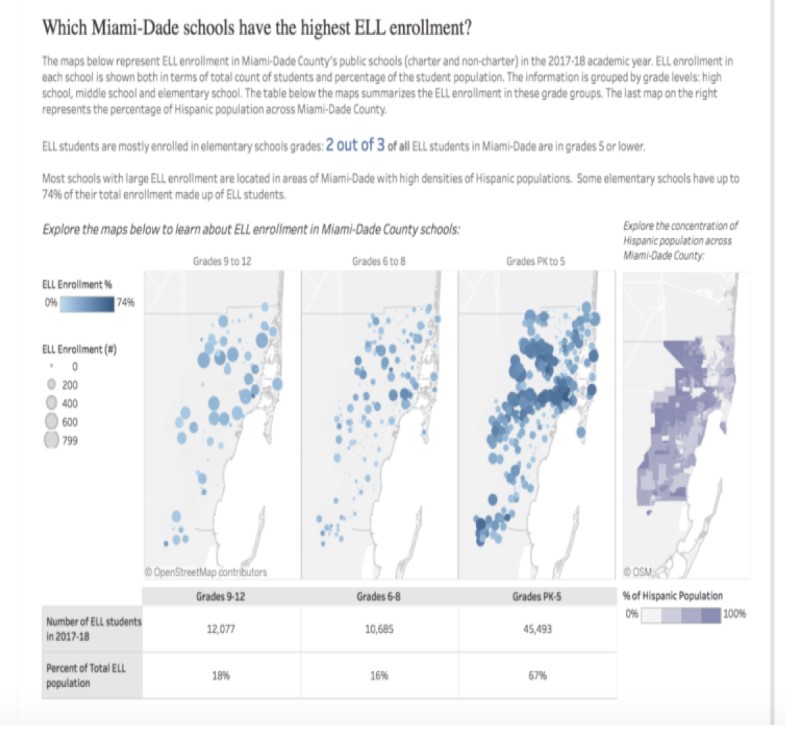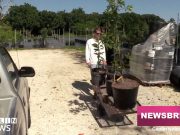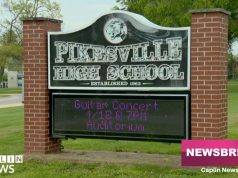This story is first part of How we know what we know: An investigative series.
Like wolves attacking a herd of lambs, the internet’s lawless land has rendered Miami-Dade’s Hispanic children especially vulnerable.
Laura Lastra, a Cuban mother of two boys attending Hialeah Elementary finds herself struggling to keep her kids away from misinformation.
“I get frustrated every time my kids come home,” Laura Lastra said in Spanish. “I catch them talking about rumors that they have heard over the internet or even by word of mouth.”
For now, Lastra keeps both her boys away from social media and believes that schools should make an effort to teach media literacy to our kids.
Due to increasing misinformation on popular platforms like YouTube, TikTok, and Instagram, studies found the Spanish-speaking population is much more susceptible to falsity. Teachers and parents in South Florida are aware. But they’re lacking the time and tools to help the younger generation win this fight. And they’re feeling helpless.
Hialeah Elementary School is a public school in a large suburban area, serving 593 students from pre-kindergarten to the fifth grade. The school’s Hispanic-American student enrollment is 99 percent.

Dr. Isabelle Lassus, a fifth-grade teacher at Hialeah Elementary, says that media literacy, as a subject, isn’t taught to students. Lassus has 36 students in total, 21 of them being Spanish speakers.
“In the last 18 years that I have been working here, I never had to teach media literacy,” said Lassus. “I can honestly say that they don’t do that here.”
And according to Rosa Iglesias, principal of Hialeah Elementary, there’s not enough time to teach the subject.
“We have to worry about improving their test scores,” said Iglesias. “Unfortunately, media literacy is considered to be an extracurricular activity. The county doesn’t provide enough funds for us to host morning announcements for our students.”
Children have unregulated access to media because of cell phones, tablets, and even gaming consoles like the Nintendo Switch that allow them to access the internet. Social media is where the majority of them spend their time.
“It’s a shame because these kids are impressionable,” said Lassus. “They literally believe in anything they find on the internet. I feel like a myth-buster debunking TikTok videos.”
According to a 2021 study by Joëlle Swart, there are gaps between social media usage and media literacy. Firstly, the meaning of news literacy is undertheorized; Secondly, she says that little discusses how young people employ literacy; And lastly, little is known about “when and how perceived social norms, contexts, and processes affect news literacy behaviors.”
Instagram and YouTube flag misleading information by warning users before viewing the content. But it isn’t the same for Spanish-speaking media, which are considerably less monitored compared to their English-speaking counterparts.
“It’s frustrating for teachers in this day and age because we want to educate children, but they’re constantly being lied to,” says Lassus.
The curriculum Miami-Dade County Public Schools uses is “competency-based,” which separates their studies through volumes. Elementary students study reading fluency, basic comprehension skills, and understanding vocabulary words that could guarantee a passing grade. Hence, Hialeah Elementary, for example, believes that improving their scores is a priority.
“We have to cut time from Physical Education, Art, and Spanish so that we can have students improving their scores for the end of the year,” said Iglesias.
Southridge Senior High, located in Homestead, has a minority enrollment of 97 percent. With a student population of 1,973, 27 percent of students scored at or above the proficient level for reading.
Javier Valdes, the school’s history teacher and football coach, says they have a small media club that doesn’t emphasize media literacy. The most they do is work on the yearbook.
“Kids need to learn about media literacy,” said Valdes. “They need to understand that misinformation is common in social media.”
Valdes came up with the idea after debating former president Donald Trump’s incident in Mar-a-Lago with his students, saying they “didn’t have the slightest idea of what was happening.”
He now has a weekly assignment for his students to look for any examples of misleading information to discuss in class.
“I like to make them do their research according to the information. We have long-winded debates, and the kids get into it,” said Valdes.
Most recently, the Florida legislature passed Senate Bill 52, which requires instruction on “the social, emotional, and physical effects of social media on students.”
Senator Danny Burgess, who proposed the bill, said: “I believe this is the most important bill that I have had the opportunity to pass as a legislator and a father.”
“Kids are losing their innocence at a younger and younger age, in large part because of what they see just by looking at their phones, and I, like many others, am concerned about the detrimental impacts social media has had on a generation of children,” said Burgess.
Ultimately, media literacy is a practice that changes as technology becomes more complex and available to a broader audience. Although regulations exist on social media platforms, misinformation and disinformation won’t cease. Fake and misleading news will find its way through the cracks of the existing rules.
Swart’s study uncovered this and finalized her findings by encouraging young people to continue refreshing and teaching media literacy as more platforms rise in popularity.
“If we were able to teach media literacy, it would help our kids understand the media that they are consuming. It would also give kids a chance to learn about media and journalism,” said Valdes.
“It’s unfair that the Hispanic community struggles to find legitimate news sources,” Lastra said. “I’ve even fallen victim to being misinformed. I don’t want the same for my children.”


































